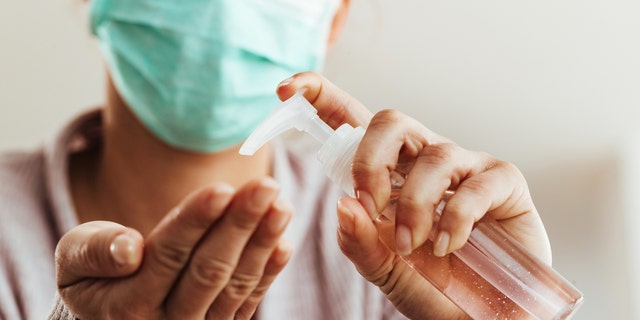
Trump: Coronavirus vaccine will be ready ‘long before the end of the year’
President Trump says the U.S. is rounding a corner on the coronavirus pandemic and discusses the companies working to develop a vaccine.
The Centers for Disease Control and Prevention continues to learn about coronavirus transmission and the severity of the resulting illness.
In an updated guidance, the CDC said the virus spreads through droplets and small airborne particles suspended in the air and inhaled. These small particles, or aerosols, are formed when an infected person “coughs, sneezes, sings, talks or breathes,” the CDC wrote, adding that mounting evidence shows the possibility of airborne transmission.
“These particles can be inhaled into the nose, mouth, airways, and lungs and cause infection. This is thought to be the main way the virus spreads,” per the CDC.
Close contact was still said to be a common route of transmission, with larger respiratory droplets transmitted from person to person and the risk of transmission increasing with prolonged close contact.

The coronavirus spreads through droplets and small airborne particles suspended in the air and inhaled, per updated guidance from the Centers for Disease Control and Prevention (CDC).
(iStock)
CORONAVIRUS TRAVELED MUCH FARTHER THAN 6 FEET IN HOSPITAL ROOM STUDY
These droplets and airborne particles can travel beyond six feet, the agency said, noting airborne transmission can occur during choir practice, in restaurants, or in fitness classes, for example. Overall, indoor places with poor ventilation raise the risk.
While touching infected surfaces is not the main route of transmission, the CDC said touching surfaces with the virus, and then the eyes, mouth or nose can also spread COVID-19.
The CDC described COVID-19, among other airborne viruses, as among the most contagious and easily spread.
“The virus that causes COVID-19 appears to spread more efficiently than influenza, but not as efficiently as measles, which is highly contagious," the health agency said.
CDC REVERSES COURSE AGAIN, SAYS ASYMPTOMATIC PEOPLE SHOULD BE TESTED
Much of the health guidance remained the same; maintain at least six feet from others, wear a mask, practice hand hygiene, isolate at home when sick and disinfect frequently touched surfaces. The agency also advised using air purifiers to cut down on airborne germs in indoor areas.

The CDC advises maintaining at least six feet from others, wearing a mask, practicing hand hygiene, isolating at home when sick and disinfecting frequently touched surfaces.
(iStock)
One emergency medicine physician doubted the updated guidance would alter the behavior of less inclined members of the public.
“Much of the public has been unwilling to adjust their behavior, so I don’t think this will have a great impact on our citizens who aren’t already being vigilant," Dr. Matt Lambert, chief medical information officer for HCI Group, told Fox News. “For policymakers who chose to account for scientific guidelines, this report will make it challenging to continue to expand indoor activities, such as dining and concerts, through the fall and winter months.”
CORONAVIRUS IN THE US: STATE-BY-STATE BREAKDOWN
Lambert said it was “difficult to predict” how schools would react to the guidelines, noting that “schools of all levels seemed to have adopted a 'stop again- start again' strategy.
The World Health Organization (WHO) acknowledged the possibility of airborne transmission in mid-July, expanding on previous guidance that said medical procedures can generate virus-laden aerosols.
The expanded guidelines were urged by hundreds of scientific experts who called on the global health agency to greater acknowledge the risk of COVID-19 airborne transmission.
CLICK HERE FOR THE FOX NEWS APP
Source: Read Full Article